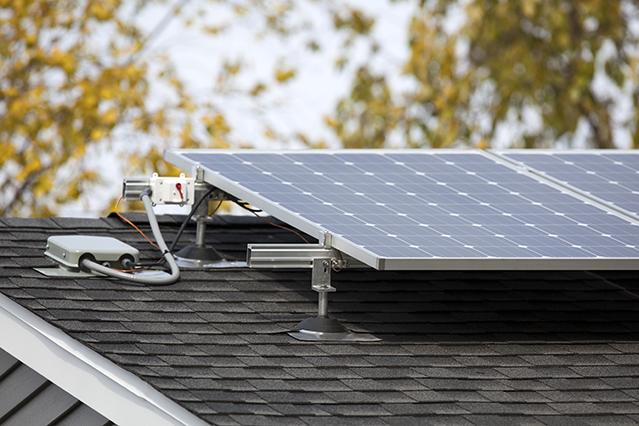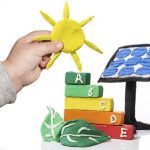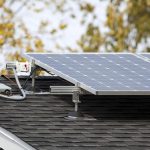The solar system consists of all the planets that orbit the sun, not to mention moons, asteroids, comets, dust, etc. etc. etc. It’s quite complex, which is why you studied it for hours back in elementary school science class and why NASA still studies it today.
Good news — residential solar systems are simpler! Three main components are required to turn your home into a solar powerhouse.
Panels
A typical solar panel contains metal conductor strips, antireflective coating, silicon layers, metal backing and up to 72 solar cells.
Solar cells convert light into electrical energy. For this to happen, electrons within solar cells have to get fired up enough to transform into an electrical current when the sun hits. That’s why solar cells require materials with semiconducting properties.
The majority of solar cells are made of crystalline silicon, which is currently the most efficient and effective way to generate solar power.
This combination of panels and cells is sometimes referred to as a photovoltaic system. Photovoltaics is a simple term for the complex process of converting solar energy into electricity.
Inverters
While solar panels generate power from the sun, it’s still not enough to turn your home into a solar powerhouse. That’s because panels produce direct current power (DC), but almost everything in your house runs on AC, or alternating current.
Enter the inverter, a device that converts DC to AC.
The two most common types of inverters are string and micro. String, or standard, inverters are standalone boxes usually installed next to the panel box to convert your system’s production from DC to AC. Micro-inverters, smaller in size than string inverters, are individual units positioned under each solar panel on your roof. Each panel discretely converts production from DC to AC.
Both types of inverters may be used for grid-tied solar systems. Micro-inverters typically cost more upfront but they optimize panel performance and minimize the impact of any single panel on the entire array’s production. In other words, if one panel is malfunctioning, the rest of your system is working just fine.
Racking
The mounting component that attaches solar panels to your roof is called racking. It provides structural support, prevents system failures and ensures the longevity of the installation.
Racking materials are lightweight and made of corrosion-resistant metals rails and hardware. Footings and stand-offs secure the racking assembly to the roof or ground surface. There are a variety of racking materials to accommodate your home’s location, needs and roof surface.
Racking systems are designed to sustain wind and snow loads on your home for many years.
Pulling it all together
Panels, inverters and racking make up the main body of a home solar system. Think of it this way:
- Panels are the eyes of the system, taking in as much light as possible
- Inverters are the heart of the system, necessary to establish electric pathways that are functional
- Racking is the bones of the system, structurally supporting the system on your roof








Leave A Comment